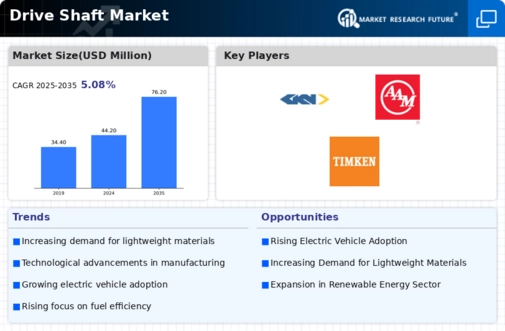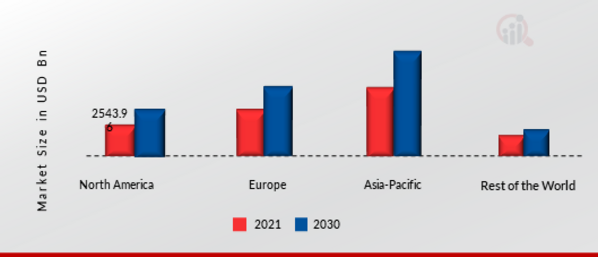Market Growth Projections
The Global Drive Shaft Market Industry is projected to experience substantial growth over the coming years. With a market value anticipated to reach 44.2 USD Billion in 2024 and further expand to 76.2 USD Billion by 2035, the industry is on a promising trajectory. The compound annual growth rate (CAGR) of 5.08% from 2025 to 2035 underscores the increasing demand for drive shafts across various automotive applications. This growth is driven by factors such as technological advancements, rising vehicle production, and a heightened focus on fuel efficiency. The market's expansion reflects the evolving landscape of the automotive industry and the critical role of drive shafts within it.
Growth of the Automotive Sector
The Global Drive Shaft Market Industry is closely linked to the overall growth of the automotive sector. As global vehicle production continues to rise, the demand for drive shafts is expected to follow suit. Factors such as urbanization, increasing disposable incomes, and a growing middle-class population contribute to higher vehicle ownership rates. This trend is particularly evident in emerging markets, where automotive sales are surging. The market is projected to grow at a CAGR of 5.08% from 2025 to 2035, reflecting the robust demand for drive shafts in new vehicle models and aftermarket applications.
Rising Focus on Fuel Efficiency
The Global Drive Shaft Market Industry is influenced by the increasing focus on fuel efficiency among consumers and manufacturers alike. As fuel prices fluctuate and environmental concerns rise, automotive companies are compelled to develop vehicles that maximize fuel economy. Drive shafts play a crucial role in enhancing vehicle efficiency by reducing weight and improving power transfer. This trend is expected to drive innovation in drive shaft design and materials, further propelling market growth. The emphasis on fuel efficiency aligns with global regulatory standards aimed at reducing emissions, thereby creating a favorable environment for the drive shaft market.
Expansion of Aftermarket Services
The Global Drive Shaft Market Industry is benefiting from the expansion of aftermarket services. As vehicle ownership increases, the demand for replacement and performance-enhancing drive shafts is also on the rise. Consumers are increasingly seeking high-quality aftermarket products to improve vehicle performance and longevity. This trend is particularly strong in regions with a growing automotive service sector. The aftermarket segment is expected to contribute significantly to the overall market growth, as more consumers opt for upgrades and replacements. This shift indicates a robust opportunity for manufacturers to innovate and cater to diverse consumer needs.
Increasing Demand for Electric Vehicles
The Global Drive Shaft Market Industry is experiencing a notable shift due to the rising demand for electric vehicles (EVs). As automakers pivot towards sustainable mobility solutions, the need for lightweight and efficient drive shafts becomes paramount. Electric vehicles often require specialized drive shafts that can handle high torque and provide optimal performance. This trend is expected to contribute significantly to the market's growth, with projections indicating that the industry could reach 44.2 USD Billion in 2024. The transition to EVs not only enhances the demand for innovative drive shaft designs but also aligns with global sustainability goals.
Technological Advancements in Manufacturing
Technological advancements in manufacturing processes are driving the Global Drive Shaft Market Industry forward. Innovations such as computer-aided design (CAD) and automated production techniques enhance precision and efficiency in drive shaft production. These advancements enable manufacturers to produce lightweight, durable, and high-performance drive shafts that meet the evolving demands of various automotive applications. As a result, the market is poised for growth, with an anticipated increase to 76.2 USD Billion by 2035. The integration of advanced materials and manufacturing technologies is likely to redefine industry standards and improve product offerings.















Leave a Comment